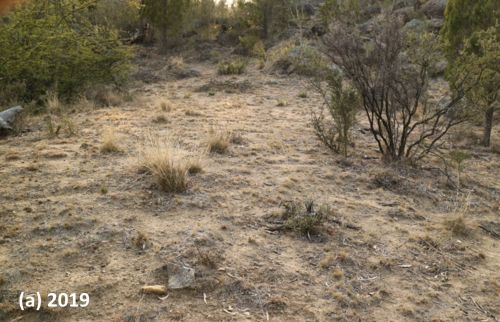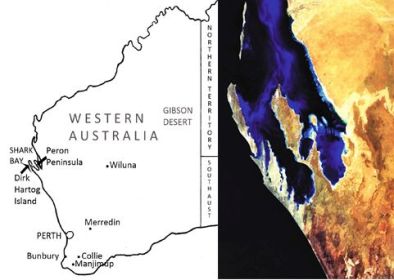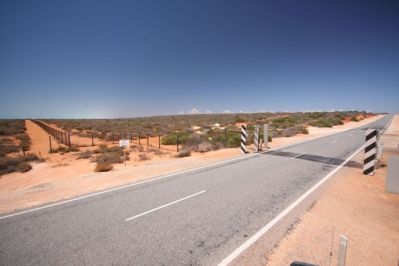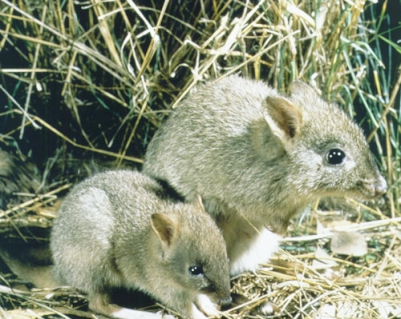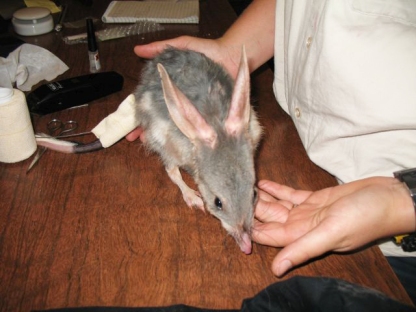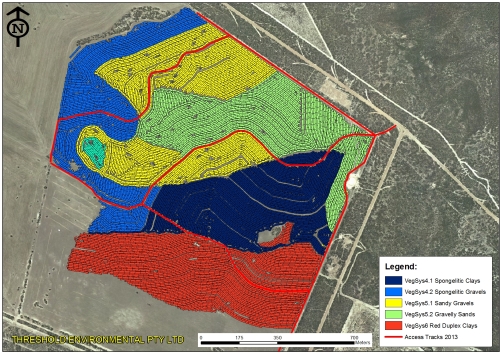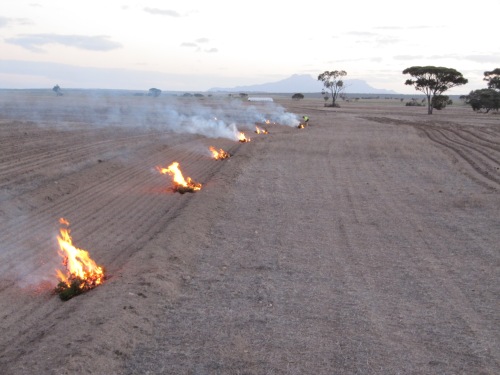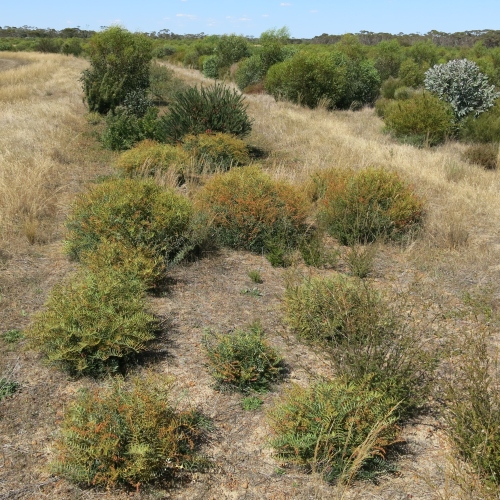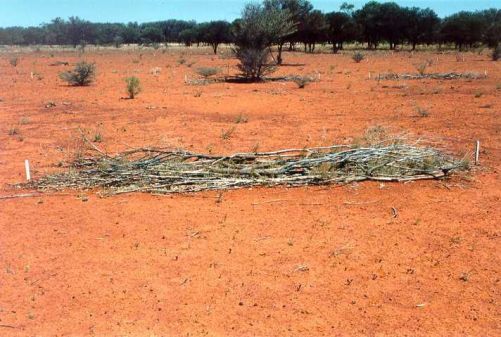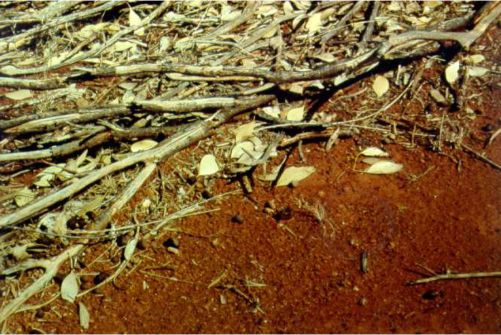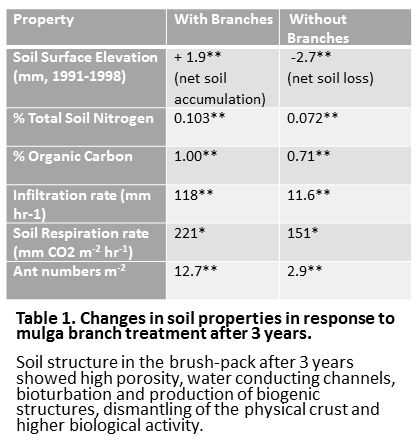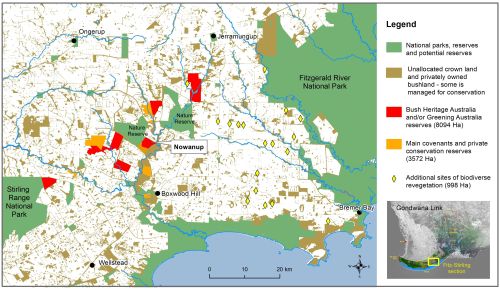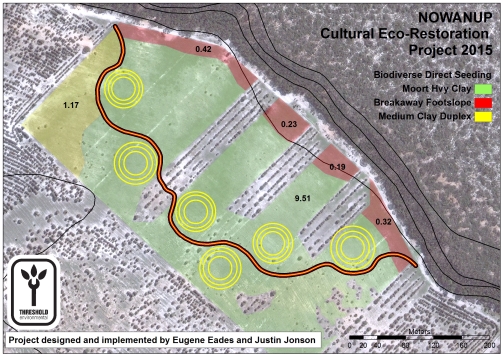Tein McDonald
Figure 1. One of the many ‘before and after’ photo pairs showing how, (a) at the start of the project in 2019, a near-monoculture of African Love Grass was persisting even during the drought – but (b) native regeneration boomed after two seasons of good rain and regular spot-spraying of the prolific and diverse weed that regenerated along with the natives.
Introduction. Assisted regeneration works have been undertaken over three seasons at a small (4ha) but uncleared privately owned bush block on the urban boundary of Cooma in the southern tablelands of NSW. Degradation at the start of the project in 2019 reflected past land uses. Flatter areas disturbed by historic light sheep grazing and vehicular tracks appeared in poor condition, with infestations of serious weed, particularly bird spread shrubs and pasture weeds. Drought-induced dieback occurred across the site, along with evidence of overgrazing by macropods and rabbits. Most of the site’s extensive (lichen and moss-covered) granite rocky knolls, however, remained undisturbed and in good condition.
Results of the works were expected to be gradual, given that the area’s annual average rainfall was around 538 mm and growing seasons short due to the southern tablelands’ relatively cold climate. While these lower expectations were reasonable, they did not factor in the above average rainfall of the 2021-21 season and, particularly, the very high and evenly distributed rainfall of the 2021-22 growing season.
Vegetation community. The main vegetation association on the site (and the Reserve) is Ribbon Gum (Eucalyptus viminalis)-E Black Cypress Pine (Callitris endlicheri) grassy woodland, with co-dominant trees including Candlebark (E. rubida), Apple Box (E. bridgesiana), Broad-leaved Peppermint (E. dives) and Mountain Gum (E. dalympleana). Sweet Bursaria (Bursaria spinosa), Red-stemmed Wattle (Acacia rubida) and Woolly Grevillea (Grevillea lanigera) are common in the mid-storey, along with six Fabaceae shrubs. Out of the 88 native vascular plant species, 63 are herbaceous (15 grass species and 48 forb species including 13 Asteraceae) species.
Weeds. At least 40 weed species occur on site, falling into two groupings – shrubs and groundcovers. The most prevalent shrubs were Orange Firethorn (Pyrocantha spp.) and Cotoneaster (Cotoneaster spp.) The most prevalent groundcovers were African Love Grass (Eragrostis curvula), Yellow Catsear (Hypochaeris radicata), Smooth Catsear (Hypochaeris glabra), St Johns Wort (Hypericum perforatum), Hare’s Foot Clover (Trifolium arvense), Proliferous pink (Petrorhagia nanteuilii) and Fleabane (Conyza sp.).
Works undertaken. Works have focused on the systematic and careful spot-spraying of individual weeds, rigorously following up to avoid the weed recharging soil seed banks. Cut brush was also laid down in a brickwork pattern along the contours to retain waterflow (where erosion was an issue) or deter macropods (where overgrazing was an issue, see https://youtu.be/4hmLFSL_kHQ ).
At the commencement of the works, ‘before’ photos were taken from eight pegged photopoints and at least 10 other informal ‘before’ shots across a wider range of subsites. Condition class mapping was undertaken using a 5-scale system adapted from the system used by the NSW National Trust since the 1980s.
Figure 3. (a) Before and (b) after treatment at the ‘Rabbit flat’ subsite. This area was highly drought affected and overgrazed by kangaroos and rabbits in 2019. Weed trimmings were laid on the site to reduce sheet erosion and grazing. Weeds were regularly controlled, particularly African Love Grass and Hare’s Foot Clover. Drought breaking rains triggered germination of mainly Golden Everlasting (Chrysocephalum apiculatum), New Holland Daisy (Vittadinea cuneata) and range of other natives. Very little African Love Grass and other weeds now persist at this site.
Weed treatments (totalling approx. 250 hours) were carried out over three growing seasons (Spring- Autumn) starting in December 2019 and extending till May 2022 (Table 1). By far the most hours (237) were directed to precision knapsack spot-spraying of groundcover weeds, with relatively few hours treating shrub weeds. The highest input was required in the third season, due to its exceptionally favourable rainfall (Fig. 2) when we needed to increase our inputs to treat all herbaceous weed across the whole site prior to their setting seed and recharging seed banks.
Table 1. Hours involved in spot-spraying of groundcover weed for each of the three seasons.
| Season 1 (2019-20) | Season 2(2020-21) | Season 3(2019-20) |
| 77 | 56 |

Figure 2. Rainfall records at the site over three growing seasons from December 2019 to May 2022 (Blue bars is rainfall recorded at East St, Cooma; the red line the mean rainfall recorded at the Cooma Visitor’s Centre).
Results to date. While the site is far from fully recovered and works will be ongoing, results to date are encouraging. Figures 1 and 3 are three of many before and after photo pairs that compare the condition of all subsites prior to work with native plant recovery by January 2022 –24 months after the first drought-breaking rains. (Also see multiple photos at https://youtu.be/wjNviPl-MqY .) The condition classifications prior to works and at 3 seasons after works are shown in Figure 4.
In general most sites appear to have moved up in condition by at least one class; there is now substantially more area of medium to high condition after treatment compared to prior to treatment. However this result is still somewhat uncertain as the degree to which some of the Hare’s-foot Clover may have matured prior to spraying is unclear. The test of condition will be in Spring during the next above-average rainfall year.
Figure 4. Condition mapping (a) before and (b) after 3 seasons using a five-level condition classification system. The two maps show an increase in area of the green end of the spectrum (higher condition) and a reduction in area at the red end of the spectrum (lower condition). [The colour-coding and criteria are based on a four-level system used traditionally in the bush regeneration industry developed by the National Trust in the 1970s then modified during the 1990s by T. McDonald and subsequently resequenced to align with the 1-5 sequencing used in the 5-star system of the National Restoration Standards.]
Lessons learned and future directions. The resilience level of this cold-climate, drought-affected plant community proved to be surprisingly high and growth relatively rapid after highly favourable rainfall. This may indeed be due to the species’ adaptation to periodic drought and short growing seasons. Importantly (as elsewhere) such resilience also lends a capacity for natives to recover after periods of weed domination if that weed is removed.
It is logical to view the pattern of drought followed by highly favourable rainfall as somewhat similar to wildfire followed by highly favourable rainfall. In such circumstances there is benefit in systematically treating as large an area as possible to (i) take advantage of the opportunities for rapid recovery of natives and (ii) avoid massive and unusual recharge of weed seedbanks that could set a site’s condition back by many decades. While the landholders in this case did the work themselves and could increase or decrease work as required per season, cases relying on public funding would benefit from contingency funding being set aside for supporting additional restoration inputs in high rainfall seasons post-fire or post-drought.
Stakeholders. The works were carried out by the block’s landholders Tein McDonald and Graeme Little. Friends of Grassland helped with plant identification and encouragement and provided a small grant to offset the costs of herbicide and equipment.
Contact: Tein McDonald teinm@ozemail.com.au



